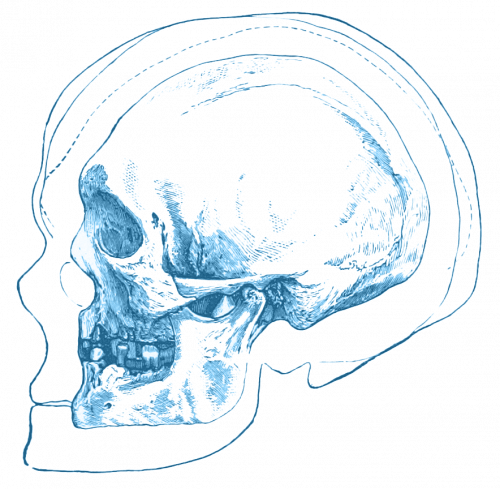One of the stranger components of the 23andMe genetic testing service is its measure of how many Neanderthal variants one has in their DNA. The presence of Neanderthal DNA in our genes, besides being a funny talking point, also corrects old misconceptions of human evolution, which hold that humans evolved directly from apes. In fact, ancient humans and Neanderthals crossbred—a process known as hybridization—which caused the appearance of Neanderthal genes in human DNA.
At first, it seems puzzling that these Neanderthals genes would persist in our modern DNA, thousands after years after the ancient hominids died out. But a new study by researchers David Enard of the University of Arizona and Dmitri Petrov of Stanford University and commented on by Emilia Huerta-Sanchez, Assistant Professor of Ecology and Evolutionary Biology at Brown University, posits that Neanderthal variants endured in our DNA because they were advantageous, and provided humans with new immunities against new viruses. Even after the Neanderthals died out, the viruses threatening them would still exist, hence humans’ retention of the protective genetic material. The process by which the gene transfer occurred, across species through crossbreeding, is known as introgression. Human and Neanderthals introgression is peculiar because in our case, the Neanderthals provided both the problem and the solution. As Sanchez puts it, “when Neanderthals and archaic humans interbred, not only did they exchange potential viruses, but they also exchanged some of the immunities for these viruses.”
To test their hypothesis, Enard and Petrov introduced a novel and indirect method to analyze the effects of the variants. They examined whether groups of proteins known for viral immunity were over-represented in the remaining Neanderthal variants of the human genome. Their logic was that if viral immunity proteins are overly present in regions of Neanderthal variance, rather than randomly distributed across the genome, it would indicate that Neanderthal variants played a role in creating viral immunity. Sanchez clarified that Enard and Petrov “thought that it was more likely to [show] archaic introgression where [viral immunity] proteins were located in the genome.”
The genetic analysis confirmed their hypothesis, finding increased viral proteins at the location of Neanderthal variants. In their analysis, the researchers included a new method which allowed them to indirectly measure RNA as well as DNA viral impact. Past studies that genetically analyze ancient hominids could only sequence DNA, because the RNA is less stable and would not have been preserved. To circumvent this, Enard and Petrov chose to analyze proteins that interact with RNA rather than DNA. They were then able to study the impact of RNA viruses, by measuring the presence of proteins that interacted with RNA specifically.
The paper’s results suggest two other major concepts, in addition to clarifying the history of human and Neanderthal interaction. The continued presence of Neanderthal variants shows the strength of pathogen spread as a selective pressure. Mutations arise and disappear at random, so if a feature persists, it’s because it provides an advantage. If humans and Neanderthals hadn’t crossbred, it would have taken the humans far longer to adapt to these pathogens, and potentially at a high cost. “Interbreeding [with Neanderthals] accelerated [humans’] adaptation to these pathogens,” said Sanchez.
Sanchez also believes that Enard and Petrov’s paper can advance research on ancient epidemics. In this field, researchers compare genetic data from specimens of various time points, from the modern day to 5,000 or 10,000 years ago. To find when archaic genes became beneficial to humans, scientists measure the frequencies of the variants at different time points. For instance, if there was an epidemic 10,000 years ago, it might have increased or decreased the protein variants that interacted with the virus responsible. This allows researchers to approximate the times of suspected epidemics by looking at time points before and after the outbreak, then measuring changes in protein frequency.
In her own work, Sanchez is particularly interested in studying the strength of pathogens as a selective force. To her, the appeal of Enard and Petrov’s work lies in its ability to measure the impact of RNA viruses. “I would be interested in applying their approach because it could give complementary information about RNA viruses that we cannot get just by sequencing ancient humans,” she said. Understanding how RNA viruses caused ancient epidemics could become important to modern problems; several devastating modern viruses such as HIV or influenza are retroviral, composed of RNA rather than DNA.
Many recent studies have been changing our rather negative stereotypes of Neanderthals as brutish and dim-witted. Similarly, these findings add another angle in favor of Neanderthals. When 23andMe first included analysis of Neanderthal variants, many people teased each other about who was “more Neanderthal.” The joke went that having more archaic Neanderthal genes was somehow primitive. But in fact, Enard and Petrov’s results show that in some ways, Neanderthals had the upper hand on humans. Their gene variants remained in our DNA not as a useless artifact, but because of their crucial role as protectors against disease.

